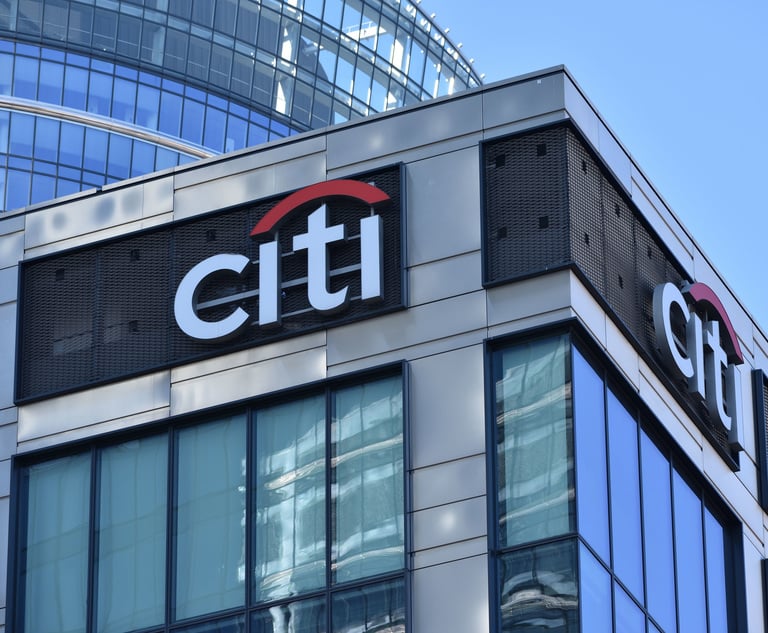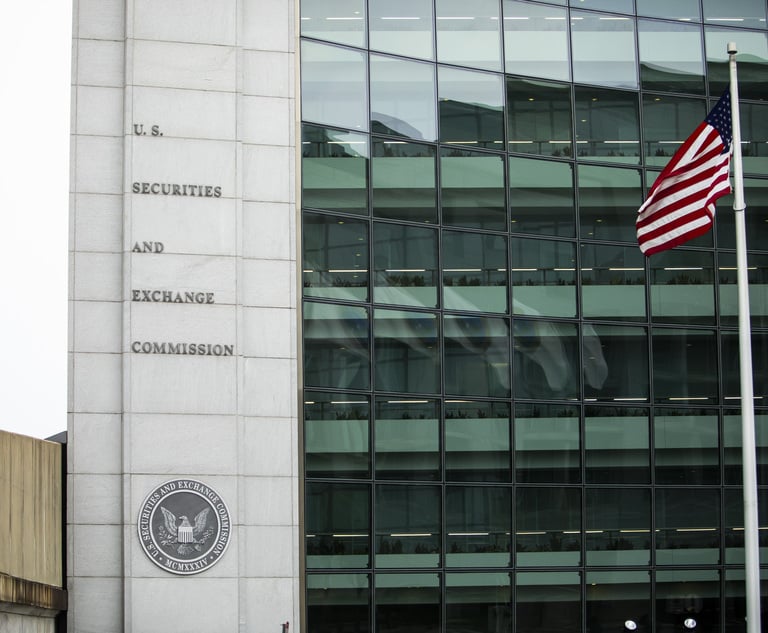State Pilots New Website to Connect Attorneys With Victims for Civil Legal Services
The website's creators suggest that any legal aid group that wants to be included in the feature as it expands across the state should check LawHelpNY to see if their contact information on the website is correct.
October 12, 2018 at 01:12 PM
6 minute read
 peshkova – Fotolia
peshkova – Fotolia
New York state is trying to make it easier for attorneys providing civil legal services to connect with crime victims with the pilot of a new, interactive website.
The online feature, called the New York Crime Victims Legal Network, is designed to facilitate the process by suggesting legal contacts for victims based on the service they are seeking.
The project is in a pilot phase now, but is expected to expand to the rest of the state outside New York City by the end of next year. The service is currently available to victims seeking help in Erie, Niagara and Genesee counties.
The Office of Victims Services collaborated on the project with the Empire Justice Center, Pro Bono Net and the Center for Human Services Research at SUNY Albany. Elizabeth Cronin, director of OVS, said the idea came from feedback they have been getting for years.
“We talked with our programs and colleagues nationally and this was an issue that kept coming up again and again,” Cronin said. “What we found is that the victims suffer financial housing, employment, immigration issues, as a direct result of their situation. So, we had to have all these partners at the table to see how we get this information out.”
The website currently offers help connecting victims with eight major categories of civil legal services they may need, like family law or help with housing. Those categories are then divided into more specific issues, from getting custody of a child after a domestic violence incident to sorting through the rights of immigrants after a crime.
There are only two steps that victims take on the website to find which civil legal assistance organization suits their needs best. They choose the county where they live and what they're looking for. The website then populates the contact information of which civil legal assistance groups would best handle their situation.
“We're trying to make it as easy as possible for people who struggle to access services,” Cronin said. “That's why we created it as an online tool. Most people have cellphones or a public library where they can get access to the website.”
The website even has a button at the top of each page that, when clicked, will redirect the user to a search engine. That was designed for situations where the user may not be in a safe place to be looking at the website, like a domestic violence victim using a computer around their abuser.
There are currently 30 nonprofit civil legal aid providers and victims services organizations listed on the website for users to connect with. Those include legal groups but also organizations that help victims with other services, like counseling.
The information for each group is drawn from LawHelpNY.org, a website powered by Pro Bono Net to connect low-income residents with attorneys.
The website's creators suggest that any legal aid group that wants to be included in the feature as it expands across the state should check LawHelpNY to see if their contact information on the website is correct. If their organization isn't listed, they should reach out to Pro Bono Net to add their information to the website.
The tool may also expand in the future to connect attorneys doing pro bono work outside civil legal aid groups for victims seeking help, said Liz Keith, program director at Pro Bono Net.
“Over time, we're hoping to build additional partnerships with law firms, law schools and other groups that are hoping to be pro bono partners,” Keith said.
The website is catered more toward victims seeking legal services than the attorneys providing them. The first phase included feedback from both victims and attorneys on how they thought the tool should function and look like. They even designed a page of the website with different colors to make it easier for attorneys to tell victims where to find the right information on that page.
“One of the unique features about our project is that almost everything we did was based on feedback we got from crime victims,” said Remla Parthasarathy, the project director of the Crime Victims Legal Network from the Empire Justice Center. “We actually developed these features of the site based on the needs that were identified on the needs assessment.”
The top requests from victims were help with housing assistance, family, employment and finances, Parthasarathy said.
The website will only serve counties outside New York City for now. That's because victims in New York City already have several avenues to find civil legal services. It's rural counties where those victims may not know where to turn when they need an attorney, Cronin said.
“The reason we chose to do that is because we felt New York City had a lot of programming and a lot of civil legal services for victims,” Cronin said. “We wanted to see how we could help victims outside the city especially victims in places in the state that are rural.”
Victims in counties outside the pilot area can still access the website, but its creators suggest reaching out to the State Bar Association or a local bar association for help in those cases.
As for the progress of the website, Parthasarathy said it's going well. It launched Oct. 1.
“We've got hundreds of people looking at the site,” Parthasarathy said. “So far, so good.”
READ MORE:
Increasing Tenants' Access to Counsel Has Raised Court Efficiency, Fairness, Judges Say
NYC Council Considering Bill to Further Expand Tenants' Right to Counsel
This content has been archived. It is available through our partners, LexisNexis® and Bloomberg Law.
To view this content, please continue to their sites.
Not a Lexis Subscriber?
Subscribe Now
Not a Bloomberg Law Subscriber?
Subscribe Now
NOT FOR REPRINT
© 2025 ALM Global, LLC, All Rights Reserved. Request academic re-use from www.copyright.com. All other uses, submit a request to [email protected]. For more information visit Asset & Logo Licensing.
You Might Like
View All
New York-Based Skadden Team Joins White & Case Group in Mexico City for Citigroup Demerger

Bankruptcy Judge Clears Path for Recovery in High-Profile Crypto Failure
3 minute read
US Judge Dismisses Lawsuit Brought Under NYC Gender Violence Law, Ruling Claims Barred Under State Measure
Trending Stories
- 1New York-Based Skadden Team Joins White & Case Group in Mexico City for Citigroup Demerger
- 2No Two Wildfires Alike: Lawyers Take Different Legal Strategies in California
- 3Poop-Themed Dog Toy OK as Parody, but Still Tarnished Jack Daniel’s Brand, Court Says
- 4Meet the New President of NY's Association of Trial Court Jurists
- 5Lawyers' Phones Are Ringing: What Should Employers Do If ICE Raids Their Business?
Who Got The Work
J. Brugh Lower of Gibbons has entered an appearance for industrial equipment supplier Devco Corporation in a pending trademark infringement lawsuit. The suit, accusing the defendant of selling knock-off Graco products, was filed Dec. 18 in New Jersey District Court by Rivkin Radler on behalf of Graco Inc. and Graco Minnesota. The case, assigned to U.S. District Judge Zahid N. Quraishi, is 3:24-cv-11294, Graco Inc. et al v. Devco Corporation.
Who Got The Work
Rebecca Maller-Stein and Kent A. Yalowitz of Arnold & Porter Kaye Scholer have entered their appearances for Hanaco Venture Capital and its executives, Lior Prosor and David Frankel, in a pending securities lawsuit. The action, filed on Dec. 24 in New York Southern District Court by Zell, Aron & Co. on behalf of Goldeneye Advisors, accuses the defendants of negligently and fraudulently managing the plaintiff's $1 million investment. The case, assigned to U.S. District Judge Vernon S. Broderick, is 1:24-cv-09918, Goldeneye Advisors, LLC v. Hanaco Venture Capital, Ltd. et al.
Who Got The Work
Attorneys from A&O Shearman has stepped in as defense counsel for Toronto-Dominion Bank and other defendants in a pending securities class action. The suit, filed Dec. 11 in New York Southern District Court by Bleichmar Fonti & Auld, accuses the defendants of concealing the bank's 'pervasive' deficiencies in regards to its compliance with the Bank Secrecy Act and the quality of its anti-money laundering controls. The case, assigned to U.S. District Judge Arun Subramanian, is 1:24-cv-09445, Gonzalez v. The Toronto-Dominion Bank et al.
Who Got The Work
Crown Castle International, a Pennsylvania company providing shared communications infrastructure, has turned to Luke D. Wolf of Gordon Rees Scully Mansukhani to fend off a pending breach-of-contract lawsuit. The court action, filed Nov. 25 in Michigan Eastern District Court by Hooper Hathaway PC on behalf of The Town Residences LLC, accuses Crown Castle of failing to transfer approximately $30,000 in utility payments from T-Mobile in breach of a roof-top lease and assignment agreement. The case, assigned to U.S. District Judge Susan K. Declercq, is 2:24-cv-13131, The Town Residences LLC v. T-Mobile US, Inc. et al.
Who Got The Work
Wilfred P. Coronato and Daniel M. Schwartz of McCarter & English have stepped in as defense counsel to Electrolux Home Products Inc. in a pending product liability lawsuit. The court action, filed Nov. 26 in New York Eastern District Court by Poulos Lopiccolo PC and Nagel Rice LLP on behalf of David Stern, alleges that the defendant's refrigerators’ drawers and shelving repeatedly break and fall apart within months after purchase. The case, assigned to U.S. District Judge Joan M. Azrack, is 2:24-cv-08204, Stern v. Electrolux Home Products, Inc.
Featured Firms
Law Offices of Gary Martin Hays & Associates, P.C.
(470) 294-1674
Law Offices of Mark E. Salomone
(857) 444-6468
Smith & Hassler
(713) 739-1250







